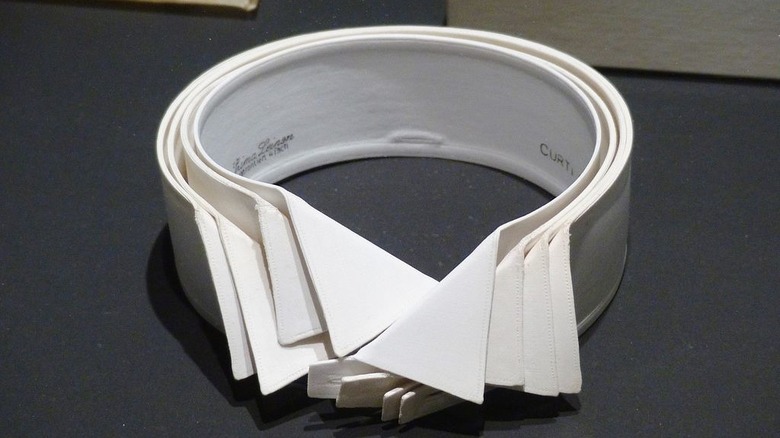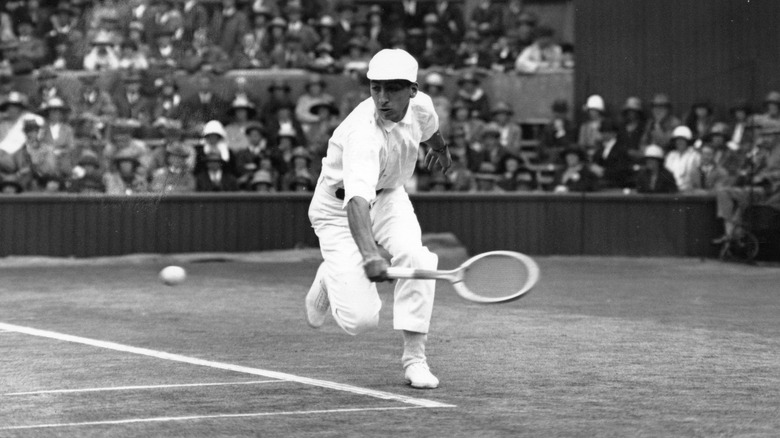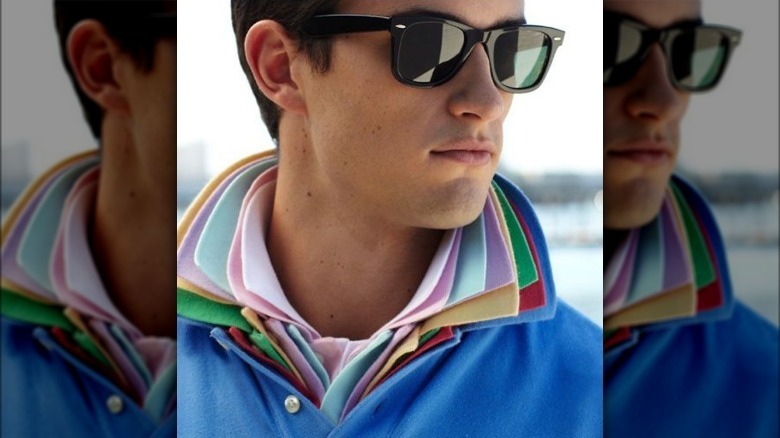How Tennis Led To An 80's Fashion Trend
When looking back on the last 50 years of fashion, many trends have had their moment in the sun, only to disappear as quickly as they came. From the bell bottom pants of the '70s to the loud colors and loose fits of the '90s, styles have come and gone, leaving many an awkward family photo in their wake.
But some trends, once established, never really go away. Though their popularity may subside for a decade, their sartorial season is bound to return again. So it is with the humble yet provocative upturned collar of a polo shirt.
Few fashion statements are as polarizing or long lasting. For some it is the ultimate symbol of conceit, a shining beacon of toxic bro culture. For others it is a sign of belonging to the upper crust of society, a clear indicator to your peers that even if you didn't attend an elite boarding school, you at least had the good manners to pretend like you did.
Let's talk about collars
Since their inception, collars have been intimately associated with class and status. At its most basic, a collar protects the neck from the discomforts of a wool jacket or a suit of armor. Likewise, it also protects the jacket from the sweat and grime that can accumulate on the neck. But for the wealthy, if something must be seen, it is best to flaunt it. And thus began a Renaissance arms race of ostentatious collars and ruffs among the elite of Europe and particularly England (via MEL).
Over time, sartorial passions cooled, the ruffles declined in popularity, and around the 19th century, fashion began to resemble what it looks like today. The everyday outfit for men is basically the same across class: an undershirt beneath a jacket. One of the things that separates the unwashed masses from the prim and proper is how many shirts one owns and how often they can be washed.
Those with means have no problem owning a multitude of shirts and having them washed frequently. Those without can afford neither a multitude of shirts, nor the time it takes to launder them often. Thus, a clean white collar is a way to project your social status in the eyes of those around you.
Let's talk about tennis
Tennis is an aristocratic sport. You need access to a court, and specialized racquets and balls in order to play. Even more restricting, for years you wouldn't be allowed to play at any of the tennis clubs unless you had a set of tennis whites: white pants, white button-up shirt, and often a tie. It's more than a little cumbersome (via Wilson).
In the 1920s, one man had had enough. His name was René Lacoste and he was one of the best tennis players of his time. He set out to make a new outfit for himself. Instead of a long-sleeved shirt, his would be short sleeved. Instead of a heavy woven material, his would be knitted. He added a longer tail to keep it tucked in amidst the rigors of the tennis court. He put an embroidered crocodile on the breast to represent the nickname the press had given him. And he added a soft collar that could be upturned to protect his neck from the sun (via Encyclopedia of Fashion).
He debuted his new shirt at the 1926 US Open and it was an instant hit. The design was such an improvement over other athletic uniforms of the time that the tennis shirt quickly found a home with golf players and polo players too (via Brand Channel).
Let's talk about popped collars
The modern phenomenon of upturning a shirt collar began in 1926 with René Lacoste and his tennis shirt. At the time, the shirts were primarily reserved for athletes in upper-class sports, and thus became popular leisure wear among the east coast elite, particularly at preparatory schools and Ivy League universities.
For the next 50 years the popped collar strayed into and out of the limelight. It could be seen on the likes of James Dean and Audrey Hepburn during the '50s and '60s. It faded a bit during the '70s, when huge lapels became the order of the day, but fate intervened in favor of popped collars in 1980 with the publication of "The Official Preppy Handbook." Although the authors intended to mock the preppy subculture, popular culture instead embraced the popped collar (via House of Style Stories).
The popped collar has waxed and waned in popularity since then, but never really disappeared. As long as people keep wearing polo shirts, it's likely never going away entirely.



